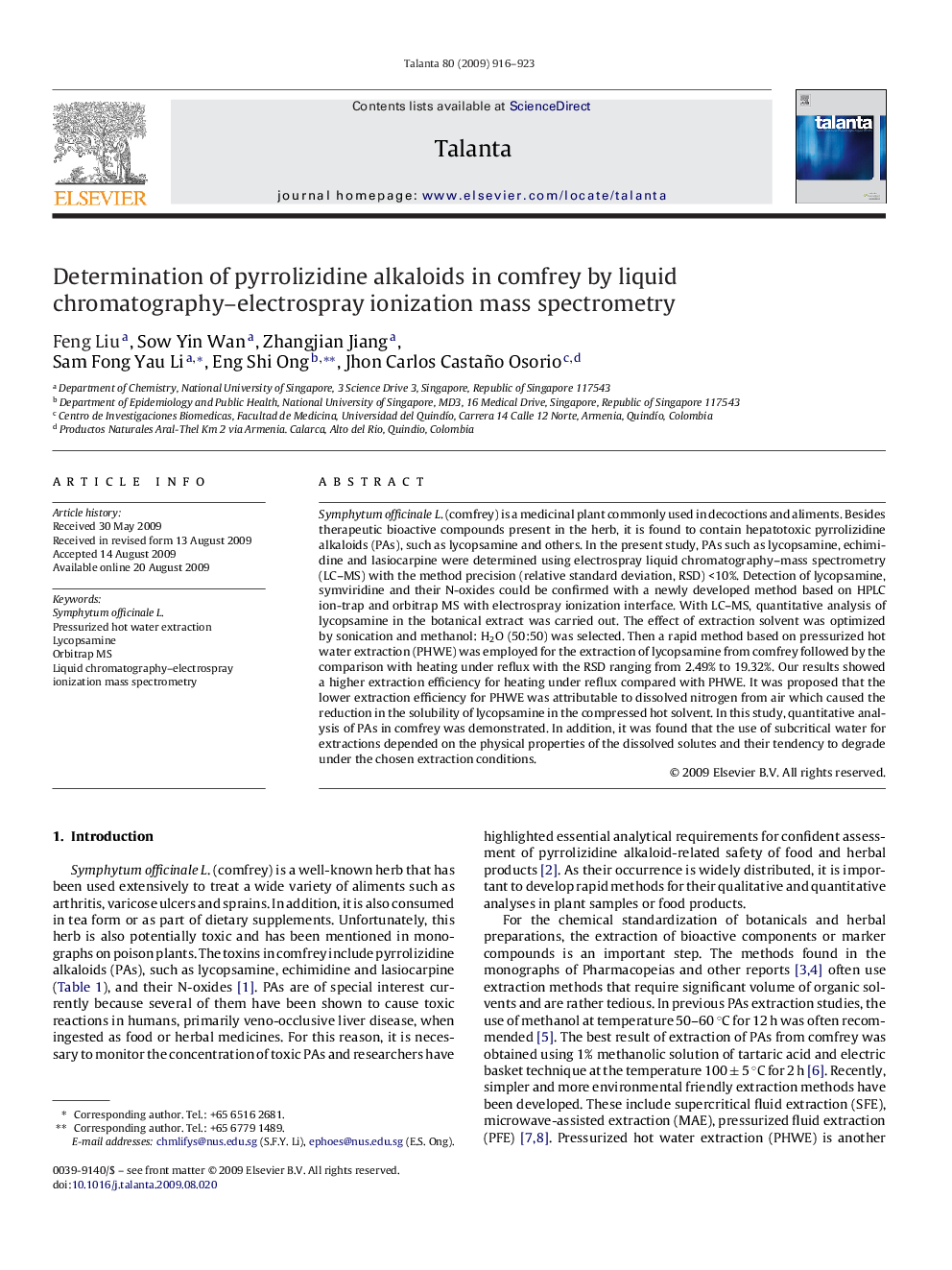| Article ID | Journal | Published Year | Pages | File Type |
|---|---|---|---|---|
| 1246782 | Talanta | 2009 | 8 Pages |
Symphytum officinale L. (comfrey) is a medicinal plant commonly used in decoctions and aliments. Besides therapeutic bioactive compounds present in the herb, it is found to contain hepatotoxic pyrrolizidine alkaloids (PAs), such as lycopsamine and others. In the present study, PAs such as lycopsamine, echimidine and lasiocarpine were determined using electrospray liquid chromatography–mass spectrometry (LC–MS) with the method precision (relative standard deviation, RSD) <10%. Detection of lycopsamine, symviridine and their N-oxides could be confirmed with a newly developed method based on HPLC ion-trap and orbitrap MS with electrospray ionization interface. With LC–MS, quantitative analysis of lycopsamine in the botanical extract was carried out. The effect of extraction solvent was optimized by sonication and methanol: H2O (50:50) was selected. Then a rapid method based on pressurized hot water extraction (PHWE) was employed for the extraction of lycopsamine from comfrey followed by the comparison with heating under reflux with the RSD ranging from 2.49% to 19.32%. Our results showed a higher extraction efficiency for heating under reflux compared with PHWE. It was proposed that the lower extraction efficiency for PHWE was attributable to dissolved nitrogen from air which caused the reduction in the solubility of lycopsamine in the compressed hot solvent. In this study, quantitative analysis of PAs in comfrey was demonstrated. In addition, it was found that the use of subcritical water for extractions depended on the physical properties of the dissolved solutes and their tendency to degrade under the chosen extraction conditions.
